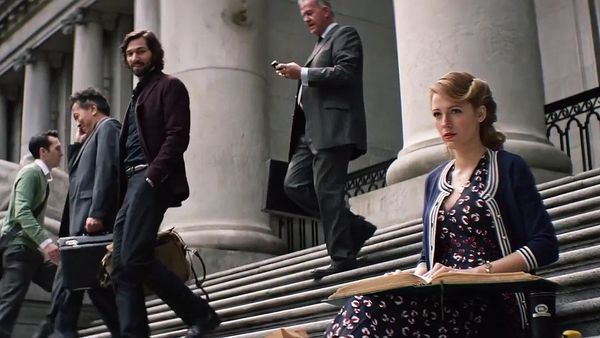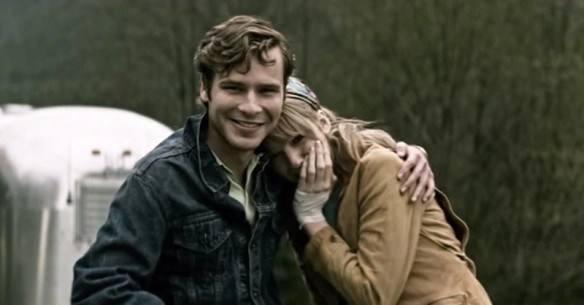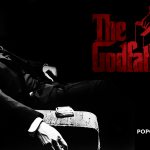The Age of Adaline 2015

The Age of Adaline (2015) is a captivating fantasy romance film that explores themes of love, time, and the emotional complexities of immortality. Directed by Lee Toland Krieger and written by J. Mills Goodloe and Salvador Paskowitz, the film offers a unique and thought-provoking narrative, blending elements of magical realism with the poignancy of human relationships. The story revolves around Adaline Bowman (Blake Lively), a woman who, after a life-altering accident, becomes immune to the effects of aging, forever frozen at the age of 29. This film weaves together the struggles of living an endless life with the inherent desire to experience love and connection, all within the constraints of time that refuse to stand still.
The film begins in the 1930s, when Adaline, a young woman living a normal life, experiences a traumatic car accident. This accident, combined with an unexpected event involving a lightning strike, grants her a miraculous gift: she stops aging, remaining forever at the age of 29. Although she initially revels in the gift of eternal youth, it soon becomes a burden. As decades pass, Adaline witnesses the natural aging and eventual loss of everyone around her, while she remains unchanged, her life a constant cycle of moving, reinventing herself, and avoiding close relationships. To protect her secret, she changes her identity every decade, never allowing herself to form lasting attachments or allow anyone to grow too close to her.
The film’s premise is both fantastical and tragic—Adaline is caught in the paradox of eternal life: while she enjoys the physical beauty and vitality of youth, she is forced to live a life of isolation and sorrow, knowing that every person she loves will grow old and die, leaving her to experience eternal grief. The core of the film is not just about immortality, but also about the emotional toll it takes on Adaline. Her isolation and loneliness are profound; she is a woman constantly haunted by the weight of time, unable to settle in one place for long or form relationships that would bind her to others. The notion of love—of truly experiencing it and allowing oneself to be vulnerable—is one of the central conflicts that the film explores.
Blake Lively delivers an impressive performance as Adaline, bringing depth and sensitivity to a character that could have easily been reduced to a mere symbol of eternal youth. Lively’s portrayal is one of quiet restraint, subtly conveying the emotional turmoil Adaline experiences. The weight of her agelessness, the longing for connection, and the painful decisions she must make are all conveyed through Lively’s nuanced performance. Adaline is not just a woman who does not age physically; she is a woman emotionally frozen in time, unable to move forward or backward in her personal life.
As the story unfolds, Adaline’s life begins to shift when she meets Ellis Jones (Michiel Huisman), a charming young philanthropist who falls in love with her. Their chemistry is palpable, and the love story that develops between them is tender and heartfelt. Ellis’s desire to form a deep connection with Adaline challenges the protective barriers she has built around herself for years. Although she initially resists, afraid that allowing herself to love him will ultimately lead to more heartbreak, she eventually gives in. However, as their relationship deepens, Adaline is forced to confront the painful reality of her situation—if she continues her relationship with Ellis, she risks revealing her secret and, ultimately, risking his heart.
The emotional heart of The Age of Adaline is not just the romantic relationship between Adaline and Ellis, but also Adaline’s relationship with her daughter, Flemming (Ellen Burstyn). Flemming, who has watched her mother remain young while she herself ages, serves as both a source of comfort and sorrow for Adaline. There is a deep sense of tragedy in the film’s portrayal of Adaline as a mother—her daughter ages, while she does not. Flemming’s realization that her mother has not aged for decades is one of the emotional turning points of the film. It is this bond between mother and daughter that provides Adaline with the strength to confront her past and ultimately make a life-altering decision.

The film also explores the impact of time through the character of William (Harrison Ford), a man from Adaline’s past who re-enters her life decades later. William and Adaline had a passionate romance when they were younger, but their love was cut short when Adaline’s immortality became too much for him to bear. William, now older, has never truly moved on from Adaline, and when they meet again, the connection they once had is reignited. This reunion forces Adaline to reckon with her past choices and the impossibility of living an eternal life without making difficult sacrifices. The reunion with William is a pivotal moment in the film, as it highlights the central tension between love and time—how a love story that is meant to be eternal can be torn apart by the relentless march of time.
One of the film’s most compelling aspects is the way it explores the cost of immortality. Adaline may remain physically young, but the price she pays is far greater than the joy of eternal life. The absence of aging allows her to avoid some of the inevitable decay that life brings, but it also forces her to live with the emotional scars of loss and loneliness. The film cleverly contrasts the timeless beauty of youth with the timeless pain of living without the natural progression of life. For all of its enchantment, immortality comes with a deep sense of isolation—a theme that the film examines with sensitivity and subtlety.

The cinematography and visual style of The Age of Adaline beautifully complement the film’s themes. The film’s production design captures the elegance of different time periods, with particular attention to the changing fashions and settings of the decades that Adaline lives through. The film uses these visuals to highlight both the passage of time and Adaline’s unchanging nature. The photography is often ethereal, with soft lighting and dreamlike visuals that emphasize Adaline’s otherworldly existence. The lush, sweeping landscapes and the glowing, serene shots of the natural world create a sense of timeless beauty, mirroring the fantastical nature of the story.
The score by Rob Simonsen adds an emotional depth to the film, enhancing its romantic and melancholic atmosphere. The music swells at key moments, evoking a sense of longing and the passage of time. It underscores the film’s exploration of love, loss, and the inevitability of change. The sound design is subtle but effective in creating an immersive emotional experience for the viewer.

The Age of Adaline is a beautiful, poignant exploration of love, time, and the sacrifices that come with living an extraordinary life. The film presents immortality as a bittersweet gift, one that offers eternal youth but denies the possibility of experiencing life as most people do—through the cycles of aging, change, and the eventual passing of loved ones. It is a thoughtful meditation on what it means to live fully and to love deeply, even when faced with the impossible. Ultimately, The Age of Adaline suggests that, while time may be the one thing we cannot control, it is love—its ability to heal and transform—that gives life meaning, whether we are destined to live for a century or a thousand years.











